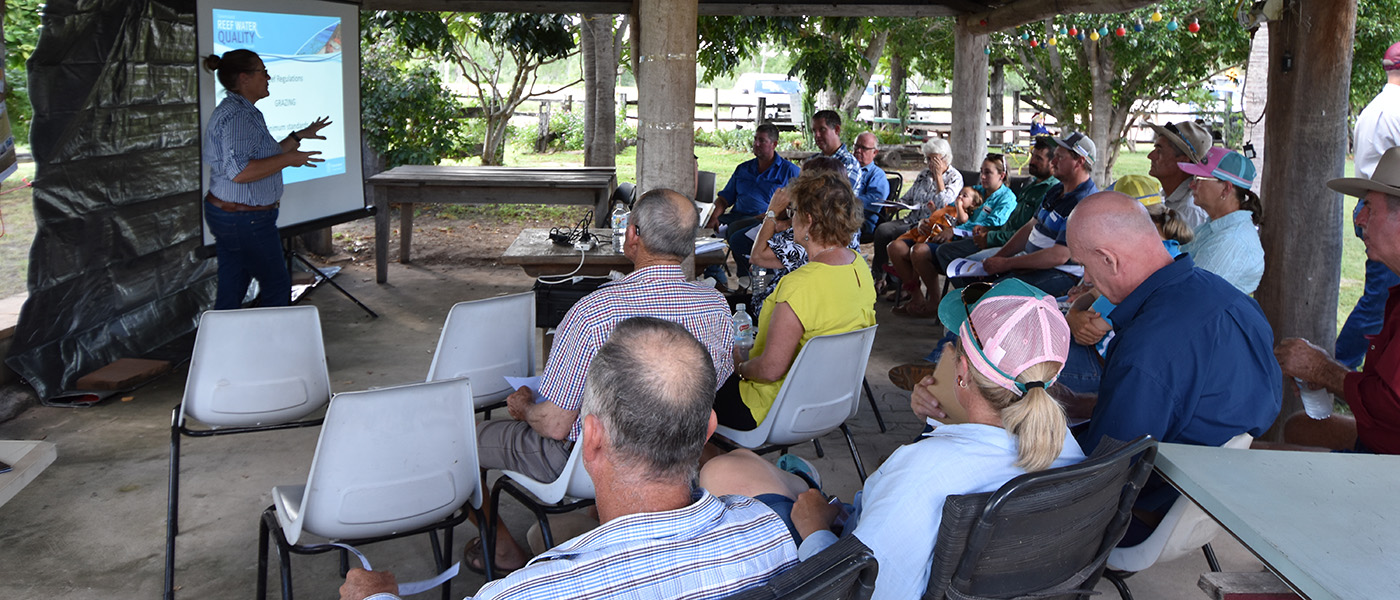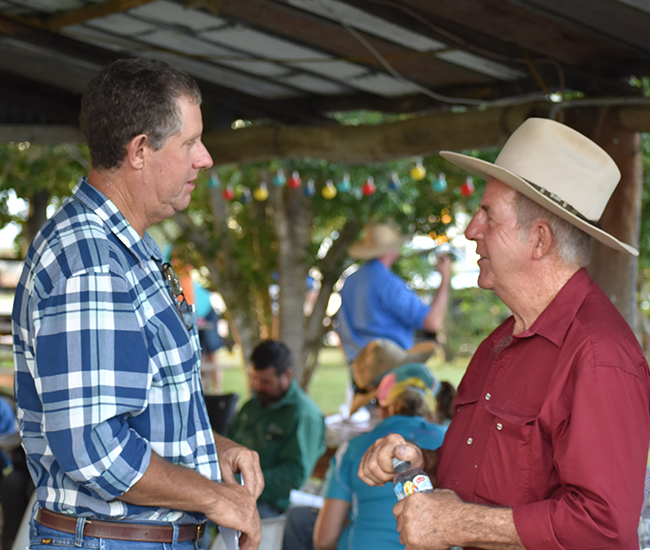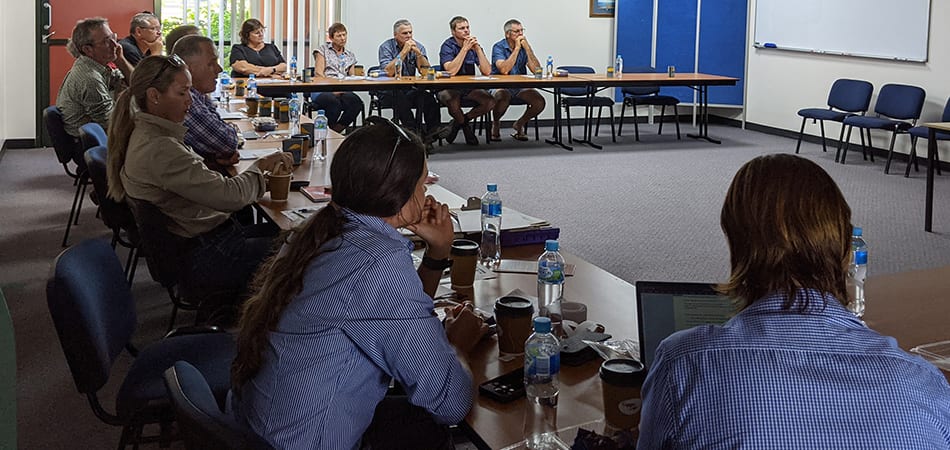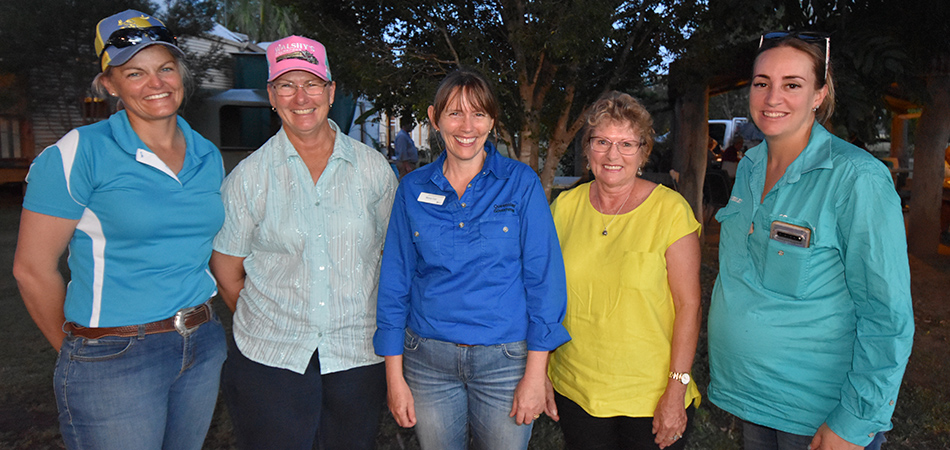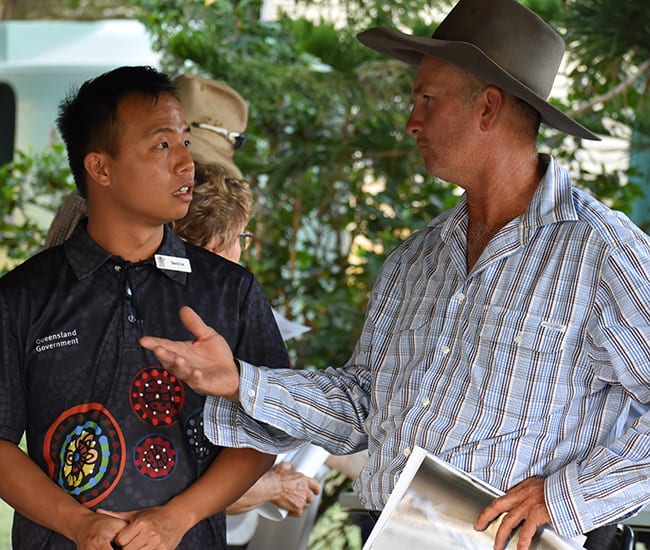
NQ Dry Tropics Senior Project Officer Cherry Emerick welcomes 20 landholders to the the Landholders Driving Change (LDC) Vegetation Management and Reef Protection Regulations workshop, Bowen River Hotel.
Brett Scott, Flagstone, and Jim Hillier, Glenmore, at the Landholders Driving Change Vegetation Management and Reef Protection Regulations workshop, Bowen River Hotel.
The lowdown on vegetation management and reef protection regulations
The ins and outs of vegetation management laws and new reef protection regulations have been discussed at information sessions held in the BBB.
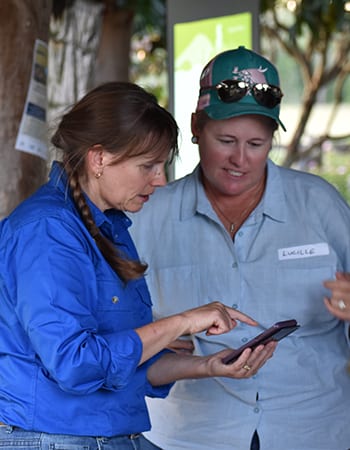
The LDC team hosted officers from Department of Resources (DoR), and Department of Environment and Science (DES) at information sessions held at the Bowen River Hotel, and Department of Agriculture and Fisheries (DAF) facility in Bowen in March.
The aim of the sessions was to provide landholders with the latest information about the Vegetation Management Act and the reef regulations.
Vegetation Management Act
Clearing of vegetation in Queensland is regulated by the Vegetation Management Act 1999, which maps areas of regulated vegetation in which clearing is restricted.
Areas of remnant vegetation are mapped as regulated vegetation and cannot be broad-scale cleared for grazing purposes.
Representatives from DNRM&E explained what was achievable under the current vegetation management legislation, and answered landholders questions.
Landholders were keen to know how to work within the laws to undertake maintenance clearing, as well as being able to develop country.
They also sought clarification about which proposed clearing activities were exempt or required a permit; as well as information to help them choose the most appropriate clearing option for proposed activity.
Landholders were also keen to learn more about how to use Queensland Globe software to assist with property mapping.
Landholders, industry, Department of Environment and Science, and Department of Resources representatives at the Landholders Driving Change Vegetation Management and Reef Protection Regulations workshop which was held at the Department of Agriculture and Fisheries facility in Bowen.
Reef protection regulations
Graziers in the Burdekin were the first required to meet the Queensland Government’s new minimum practice agricultural standards for beef cattle grazing which started on 1 December 2020.
Under the reef protection regulations, graziers need to take action to improve land condition and ground cover on areas of grazing land with less than 50 per cent ground cover (measured on 30 September each year).
Graziers sought clarification about the standard conditions graziers needed to meet reef regulations’ minimum practice standards.
Burdekin graziers can access a range of programs and support tools including the Grazing Resilience and Sustainable Solutions (GRASS) program which provides one-on-one support to develop and implement a tailor-made action plan for land management.
NQ Dry Tropics aims to support landholders to access accurate, up to date information, to enable them to make informed on-ground decisions. These workshops were organised under the LDC’s Policy Engagement activity area.
Pictured (from left) are: Stacey and Rowena Haucke, Maree Cali, of Department of Resources, Colleen Rowe and Kimberley Begg at the Landholders Driving Change Vegetation Management and Reef Protection Regulations workshop, Bowen River Hotel.
David Lin, of Department of Resources (left) and Andrew Angel, Mossvale, at the Landholders Driving Change Vegetation Management and Reef Protection Regulations workshop, Bowen River Hotel.

